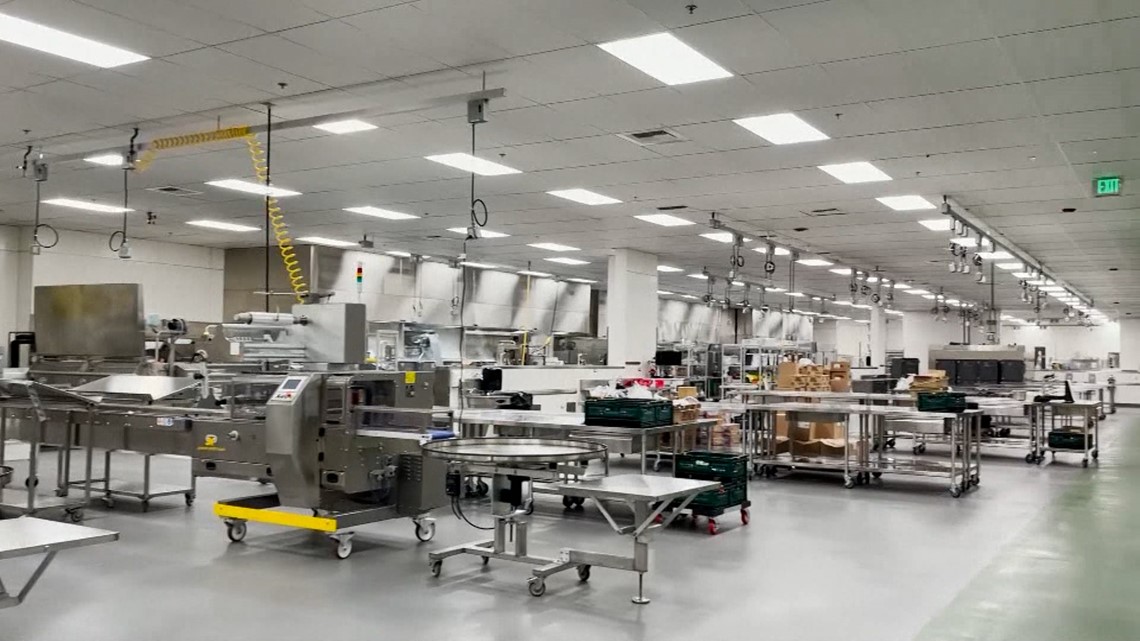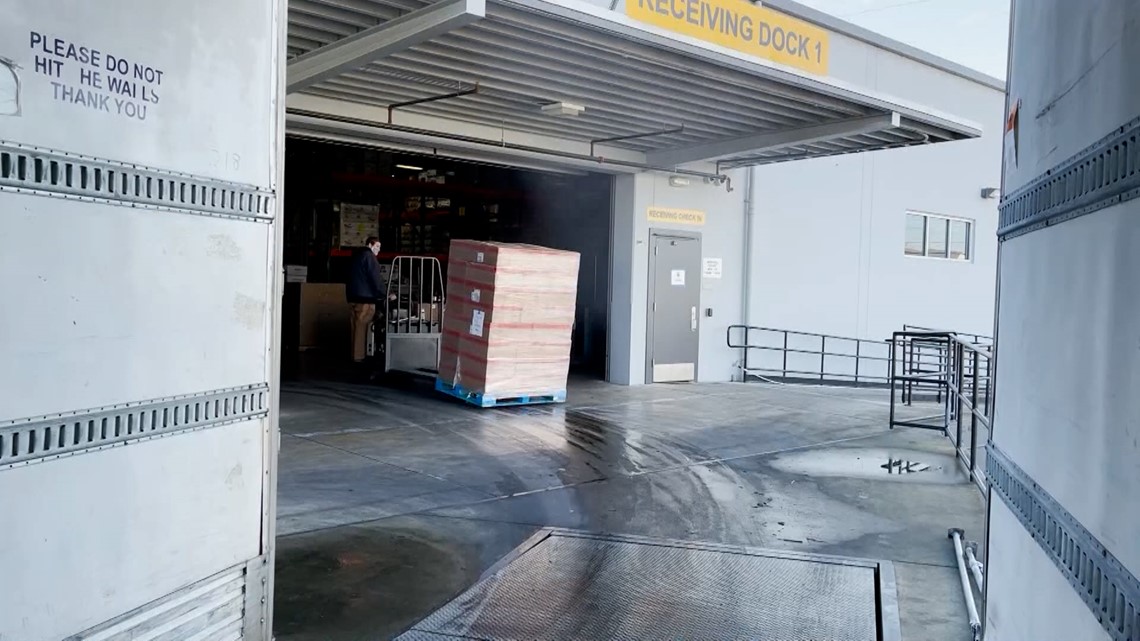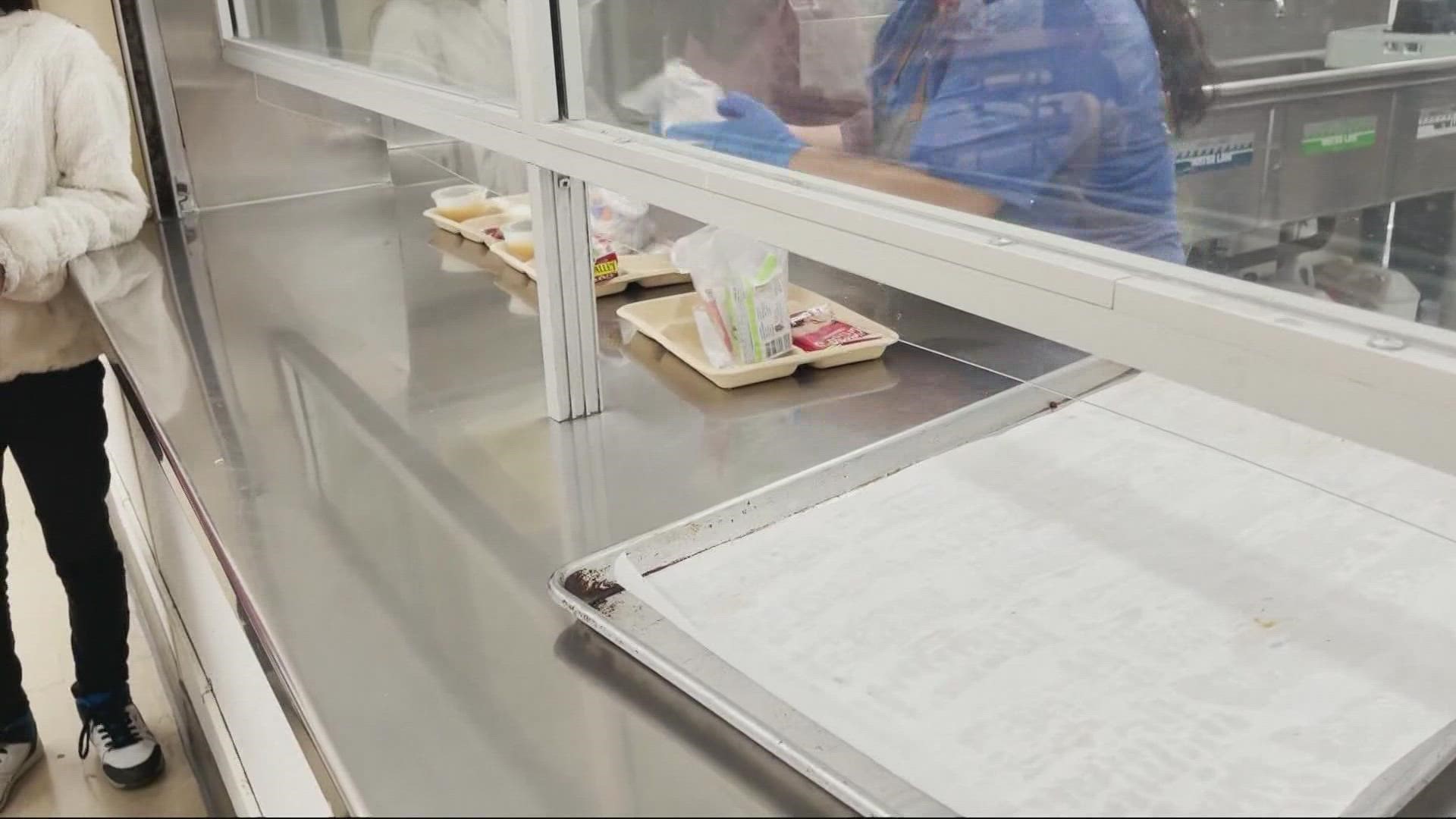SACRAMENTO, Calif. — One dollar and seventy cents, what can you buy with a buck seventy? Well, not much these days because even the dollar store has raised their prices. But that’s how much money the Sacramento City Unified School District said they’re usually left with to feed one student one meal.
The United States Department of Agriculture (USDA) does offer extra money, but if public schools want it — they are limited in what they can buy.
So what’s the point? School districts across the nation are pushing back — ten of those districts are here locally. They said they’re limited to spending that money on a pre-approved grocery list packed with frozen food, arguing kids could be eating better food for the same price.
ABC10 spoke with SCUSD who said it thinks of itself as the largest restaurant in the county.
"We serve 45,000 meals a day," said Kelsey Nederveld, assistant director of nutrition services at SCUSD. "Tell me which restaurant serves 45,000 meals a day."
For three years, Diana Flores, director of nutrition services at SCUSD and Nederveld have been leading the charge to get fresh meals to Sacramento City Unified School District students.
"We want to get back to scratch cooking, we want to get back to wholesome foods that have less preservatives and that are healthy. We have Foster Farms right down the street in Livingston, they're 90 miles away. We want to be able to buy a raw protein from Foster Farms or raw chicken thigh, a raw chicken breast and cook it in our schools for our kids rather than sending it to a processor and adding in all these additional preservatives and binders and everything else," Nederveld said.
The district even built "The Central Kitchen" where they can prep, store and distribute fresh food with their refrigerated trucks to the more than six dozen schools in the district.


Surprisingly getting that fresh food is difficult, complicated, and expensive. Even here in the farm-to-fork capital. But through a program called USDA Foods in Schools, SCUSD gets about $2 million a year to buy wholesale food. That accounts for one in every $5 the district spends on food each year.
"We want to invest $2 million into our local growers, our local economy, to feed kids wholesome meals, that's huge," Nederveld said.
But they said the money from the USDA is kind of like monopoly money. In order to use it, districts have to order food from a set list of vendors that have been pre-approved by the USDA. If districts don’t choose from that list, they don’t get to use the USDA's money.
"We're investing in the health and the future of our kids. We want to get a cleaner item a fresher item, a strawberry that was grown two miles away onto our kids’ plates," Nederveld said.
She wants more fresh food options compared to the frozen and canned foods that currently dominate the USDA's pre-approved list.
For example, take buying chicken.
"Everybody is aware of Tyson Foods, they make chicken nuggets and chicken tenders and chicken patties, we send that protein over to Tyson and Tyson will then further process that protein item into all of these different chicken items for the meal program. But they're frozen," Nederveld said.
What’s not on the USDA’s list?
"Raw ingredients. Well, that's not offered on the commodity program. So, do I either use those items, or I don't use those items and I lose the 2 million," said Flores.
That’s why SCUSD, along with about 40 other school districts nationwide, signed a letter, asking the USDA to give them actual cash, to spend freely on food from any vendor something called “cash-in-lieu of commodities.”
"What I'm asking for is, instead of sending us more money, send it differently. Instead of giving us a shopping list of $2 million with pre-determined items, send us the check for $2 million, and we'll find our own ingredients," Flores said.
Another downside of ordering from the USDA list they said is food availability. Since the COVID-19 pandemic, some deliveries have been incomplete, delayed or the trucks never come. The district said processors can’t always fulfill their orders, which leaves them scrambling for food.


"The problem is these processors also produce commercial items," said Flores. "Right now, commercial items are much higher profit margin. Where are you going to spend your resources? On something with a low margin, or something with the high margin? So right now, commercial items are readily available, but they're more expensive and we don't have it in our budget to spend the money."
In that case, the district said they must come up with the extra cash to buy the food they still need.
"So, a school district that doesn't have a cash reserve, the school district pays for it," said Flores. "So it comes out of the general fund, which is funding for educating students, and that's concerning the money should be coming from USDA for these meals."
Another source of funding is through reimbursements. Between the federal and state governments, SCUSD is reimbursed around $5.32 per student per meal, but they also have to pay for every expense related to school meals. Such as staff wages, benefits, equipment, administrative fees, etc.
The district said when you break it all down, they have about $1.70 per student to spend on school lunch.
And there’s a catch.
"If the student doesn't pick it up, you don't get any of the money," said Flores.
To recap, providing fresher food, buying local, and having more control over shipping and supply, are all reasons why the district asked the USDA for cash-in-lieu. Plus, the freedom to spend it on food vendors of its choice.
What does the USDA have to say about all this? Are they considering giving schools the cash option?
ABC10 asked the USDA for an interview numerous times, and every time they declined. Opting, instead, to send this statement saying in part:
"Per section 16 and 18 of the NSLA, there is no option to receive cash-in-lieu of USDA Foods, unless the State closed a commodity distribution center before June 30, 1974 or participated in the CASH/CLOC pilot before January 1, 1987. Due to this explicit legislative language, Congress would need to provide new authority to give either additional States or schools the option of cash-in-lieu of USDA Foods. "
FOLLOW To The Point:
► Follow Alex on Facebook and Instagram
► See all of To The Point stories
► Watch To The Point with Alex Bell every weekday night from 6:30 - 7 p.m.



















